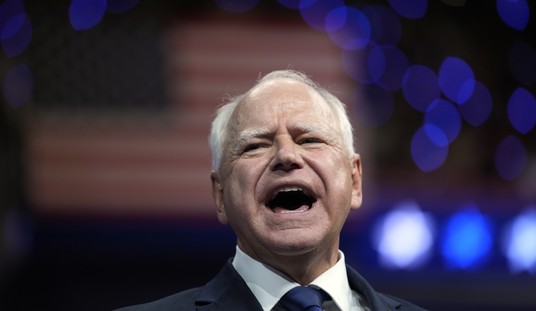I ran across a rather oddball story at NPR this week having to do with Dr. Sanjay Gupta, medical expert and reporter for CNN. He’s a neurosurgeon by trade (originally) but covers a number of usually medical related topics for Turner’s network. You may recall that when the big quake hit Tibet, CNN was on the scene and Gupta was not only covering the action, but actually was suiting up in his old surgeon’s gear and working on some of the victims. The operations were being broadcast on cable news and his medical work and his reporting wound up weaving together in a rather strange amalgam of reality and media. But as this detailed, investigative report indicates, Gupta was crossing the boundaries of his two professions and blurring the lines to the point where he seemed to lose the thread of which was which.
Journalism isn’t brain surgery — a distinction wrapped in a witticism that CNN’s Sanjay Gupta must be tired of hearing. Yet while he was covering the aftermath of a deadly earthquake in Nepal this year, the journalism evidently proved trickier than the brain surgery. Gupta, a star news correspondent and Emory University trauma neurosurgeon, appears to have misidentified a patient on whom he operated. The tale of how that happened, both twisty and subtle, throws fresh light on Gupta’s dual roles as doctor and reporter.
On April 27, Gupta and CNN reported that he performed surgery on an 8-year-old girl in Kathmandu who had been badly injured in the quake. He told viewers the girl, Salina Dahal, was in dire circumstances and could die without the surgery. Later, he informed his audiences that Salina was progressing well.
Now, an international news operation based in San Francisco is muscularly challenging those accounts. The Global Press Journal reported late Tuesday night that the 8-year-old girl never underwent surgery. Instead, the journal says, Gupta helped perform surgery on a 14-year-old with traumatic head injuries. In a telephone interview Tuesday night, I asked Gupta whether such a misstep worried him.
“I don’t like to make mistakes,” Gupta said. “Sometimes you are beholden to other people for information, or you are verifying details in other ways. It gives me pause as a doctor. It gives me pause as a journalist.”
CNN’s first report correctly identified the patient as being the older girl. (Though they said she was fifteen, later correcting that to say fourteen.) But it was apparently Gupta who told them to change it and the next coverage of the surgery said it was the eight year old.
Gupta has been summoned in for emergency surgery duty in Nepal, Haiti and Iraq, among other places. And whenever that happens, the cameras generally follow. Now, right off the bat I will say that any doctor who goes into remote, technologically limited, poverty stricken places and renders lifesaving services is to be commended. They frequently don’t have much in the way of advanced medical facilities and I fully believe some people lived who might not have without Gupta’s help.
But the curious way that he was losing track of who it was that he was operating on while still serving his full role as an on scene reporter is at least a little disturbing. Also, as the report discusses, there are matters of privacy and doctor patient relations to consider. Did the people he was putting under the knife ever get the chance to weigh in as to whether or not they wanted their traumatic injuries being turned into reality TV?
Kelly McBride, a senior scholar on media ethics with the Poynter Institute, a journalism school in St. Petersburg, Fla., also told Martin in 2010 that it was exploitative to serve both as physician and reporter.
“If they’re treating patients, they have an obligation to treat that patient with dignity,” McBride said. “Clearly those patients have no capability of consenting to … having their medical situation becoming part of a news story.”
This does have the feeling of being exploitative, but the unease I noted initially here never quite gelled in my mind to the point where I could put that tag on it until I read the article. Is it just me, or is that kind of creepy? There’s clearly value in having a news team on the scene to report on the damage, the relief efforts… even the science. But sticking a camera inside a makeshift operating tent and filming a victim getting surgery on the fly just seems disturbing, no matter what it does for your ratings.
Also, if Gupta is forgetting the details of who he’s working on while still getting A+ ratings for his reporting of the event, where does that line get drawn? Perhaps in the future, when Gupta’s services are required to tend to the gravely wounded, the cameras could be shut off and then just interview him about the experience after he’s done and washed up? It seems like a case where he should either be covering the story or part of the story, but not both.








Join the conversation as a VIP Member